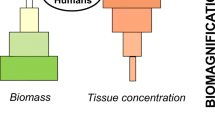Abstract
Although much is known about the effects of toxicants on single species, not much is known about the effects upon ecosystems that are more than assemblages of individual species. This situation must be addressed because past exponential growth of human populations and continuing exponential growth of national economies will put Earth's natural resources under stresses unprecedented in human history. The mission of ecotoxicologists is to see that no imbalance in the technological and ecological life support system happens, thus facilitating sustainable use of the planet. Ecosystem services will be more dependable if ecosystems are healthy. Both functional and structural attributes are as important for determining the ecosystem's health as they are for human health. Ecotoxicological assessments will be characterized by increases in both temporal and spatial scales. However, laboratory toxicological tests will remain extremely important and essential. Ecotoxicologists must become even more adept at interacting with policymakers who are responsible for societal decisions.
Similar content being viewed by others
References
Cairns, J., Jr. (1998) Consilience or consequences: Alternative scenarios for societal acceptance of sustainability initiatives. Renew. Resour. J. 16(2), 6–12.
Wilson, E.O. (1998) Resuming the enlightenment quest. The Wilson Quarterly Winter, 16–27.
Wilson, E.O. (1998) Consilience: The Unity of Knowledge. New York: Alfred A. Knopf.
Odum, E.P. (1997) Ecology: A Bridge Between Science and Society. Sunderland, MD: Sinauer Associates.
Cairns, J., Jr. (1992) The threshold problem in ecotoxicology. Ecotoxicology 1, 3–16.
Cairns, J., Jr., Bidwell, J.R. and Arnegard, M.E. (1996) Toxicity testing with communities: Microcosms, mesocosms, and whole-system manipulations. Rev. Environ. Contam. Toxicol. 147, 45–69.
Cairns, J., Jr., Niederlehner, B.R. and Smith, E.P. (1998) Correspondence of a microscale toxicity test to responses to toxicants in natural systems. In P.G. Wells, K. Lee, C. Blaise and J. Gauthier (eds) Microscale Testing in Aquatic Toxicology: Advances, Techniques, and Practice, pp. 539–47. Boca Raton, FL: CRC Press.
O'Neill, R.V., DeAngelis, D.L., Waide, J.B. and Allen, T.F.H. (1986) A Hierarchical Concept of Ecosystems. Princeton, NJ: Princeton University Press.
Cairns, J., Jr., McCormick, P.V. and Niederlehner, B.R. (1993) A proposed framework for developing indicators of ecosystem health. Hydrobiologia 263(1), 1–44.
Bird, P. and Rapport, D. (1986) State of the environment report for Canada. Minister of the Environment, Ottawa, Canada.
Wentworth, N., Westrick, J. and Wang, K. (1986) Drinking water quality data bases. In F. Kopfler and Graun, G. (eds) Environmental Epidemiology. Chelsea, MI: Lewis Publishers.
Hunsaker, C.T. and Carpenter, D.E. (eds). (1990) Environmental Monitoring and Assessment Program: Ecological Indicators. Office of Research and Development, US. Environmental Protection Agency, Research Triangle Park, NC.
Lichtkopper, F. and Hushak, L. (1989) Characteristics of Ohio's Lake Erie Recreational Marina. J. Great Lakes Res. 15, 418–26.
Author information
Authors and Affiliations
Rights and permissions
About this article
Cite this article
Cairns, J. Speculations about future trends in the field of ecotoxicology. Speculations in Science and Technology 21, 205–211 (1998). https://doi.org/10.1023/A:1005443727626
Issue Date:
DOI: https://doi.org/10.1023/A:1005443727626




